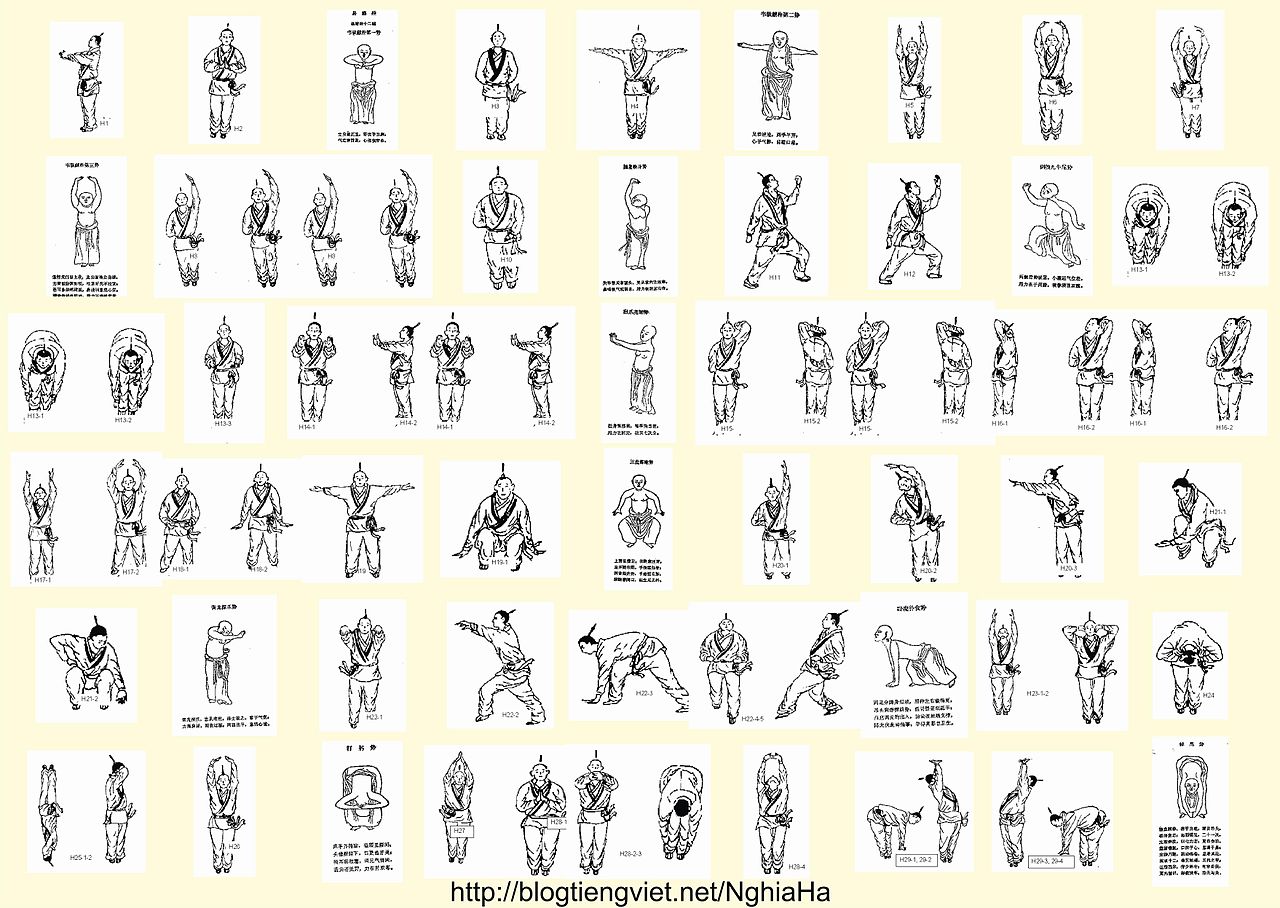Yijin Jing - "Muscle/Tendon Change Classic" - Tendon - Muscle Strengthening QiGong Exercise
- Yi - Change
- Jin - Tendons
- Jing - Methods
Strengthening the muscles and tendons, promoting strength and flexibility, speed and stamina, balance and coordination of the body.
These set of forms are the key element of the physical conditioning used in Shaolin training.

Chart by Newone - self-made Wikimedia
According to legend, the Yi Jin Jing was said to be left behind by Bodhidharma after his departure from the Shaolin Monastery, and discovered within his grave or hidden in the walls of the temple, years after he had left. It was accompanied by another text, the Xisui Jing, which was passed to a student of Bodhidharma's but has not survived to the modern day.
Bodhidharma, a Buddhist monk (5thC.), is credited as the transmitter of Chan Buddhism and regarded as its first Chinese patriarch. He also began the physical training of the Shaolin Monastery monks that led to the creation of Shaolin Kung Fu.
The Chinese Health QiGong Association complied the set of twelve traditional routines of Yi Jin Jing. Soft, extended, even movements that invigorate the limbs and internal organs. It improves flexibility, balance and muscular strength, and have a beneficial effect on the respiratory system.
Routines:Ready Position
- Wei Tuo Presenting the Pestle 1
- Wei Tuo Presenting the Pestle 2
- Wei Tuo Presenting the Pestle 3
- Plucking a Star and Exchanging a Star Cluster
- Pulling Nine Cows by Their Tails
- Displaying Paw-Style Palms like a White Crane Spreading Its Wings
- Nine Ghosts Drawing Swords
- Three Plates Falling on the Floor
- Black Dragon Displaying Its Claws
- Tiger Springing on Its Prey
- bowing Down in Salutation
- Swinging the Tail
No comments:
Post a Comment